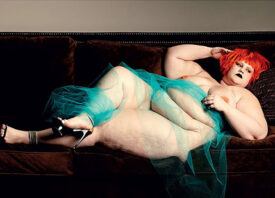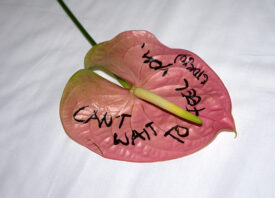Search this site
Radiant Girls of the African Diaspora, Adorned in Crowns, Lace, and Pearls


According to an American Black folktale, enslaved people once possessed magical, ancient words that gave them the ability to fly away to freedom. It’s a story made famous by The People Could Fly, a 1985 collection of tales by the children’s book author Virginia Hamilton, told and retold by many. Today, feathers and wings once again become a recurring motif in the resplendent work of Tokie Rome-Taylor, an American photography-based artist living in Atlanta. One of her portraits, featuring a young woman gilded in jewels, bears a name similar to Hamilton’s book, with one key word changed: My People Could Fly.
“My models are mostly my children and those of friends and family, but what they represent goes far beyond that,” Rome-Taylor tells me. As a child herself, the artist longed to see herself reflected in images around her, and she searched often–only to find blank spots and missing pages. “African American children have primarily been ignored as the center within the canon of the art world,” she says.
“Museums are the repositories of what a society supposedly values and deems culturally relevant, and they are also spaces that have, for centuries, chosen to ignore the artwork of people of color. Works that did have people of color in them were depicted in a subservient manner. This is a demeaning narrative that children of color have had to battle subconsciously. I know I did as a child and as a young adult.”
As she grew, Rome-Taylor continued to search for representations that felt true and real, pulling from history to fill in the gaps. “As an adult, I looked more into spirituality and how African spiritual practices overlap with those of Christian religions in the south, where I grew up,” she remembers. “A lot of the things I was doing in my work were instinct; exploring African cultural practices such as adornment, leaving offerings for ancestors, or how objects and artifacts have symbolic meaning and use.”
Those objects and artifacts–crowns; bowls; beads in the form of pearls; lace; cotton; and the color blue, meant to keep spirits away or draw them in–naturally appeared and emerged throughout her portraits of children. “Later, I had a virtual studio visit with the curator T.K. Smith, and we talked about my use of materials, vintage items, and artifacts,” the artist says. “We got onto the subject of how Africans from the diaspora were very adept at hiding their traditions and blending them into the new world traditions of the Americas.
“TK pointed out to me that this was really an exploration of Creolization; the blending of western and African practice, materials, and cultures. People using the traditions that they had but substituting the materials used in those traditions with items that would be found in the new region or culture. It speaks to the expectation to assimilate in a new culture.
“This outward appearance of assimilation is reflected in the work, but the underlying narrative is that these are people who maintained their traditions and passed them on to their ancestors as best they could. It was like a light bulb had come on for me. I was exploring this concept subconsciously, but he was able to put his finger on what I was doing. Even now, I am at the very beginning of a long and winding road of discovering my history and my connection to it. It is a journey that doesn’t have a clear roadmap or guides.”
From there, she dug deeper into African spirituality and looked at the ways in which the people of the African diaspora held fast to their traditions and beliefs, while blending them with the new ones they encountered. They rebelled, subverted, and survived, despite attempts to wipe out their history. She read books by the Yale art historian Robert Farris Thompson, who specializes in the art of Africa and the diaspora, and she searched Jstor for articles on “Creolization”, “conjure”, and “material culture.”
Now, Taylor creates the pictures she yearned for as a child. “I am creating images that explore power, spirituality, and owning oneself without question,” she says. “There is a subconscious learning that happens when we see ourselves portrayed in a certain manner. I want my subjects and those viewing to make that connection to elevation, power, and worthiness to be seen.
“It’s important to explore visibility—who gets seen versus who isn’t worthy of being seen. My children, literally and figuratively, should be seen. They are seeing themselves as strong, unafraid–confrontational even–pure and open to the world. Children are my conduits to connect to elevation, spirituality, and ancestors, but they are also my way of speaking to who our society deems worthy.”
The girls in Taylor’s photos exist simultaneously in the past, present, and future. They represent a mirrored reflection of the artist, the ancestors who came before her, and the heirs who will take up her mantle, inherit her dreams, and follow in her footsteps. “There is this sense that my work is being guided by the unseen,” she tells me. “A comfortable calm, as if I am doing what my ancestors have asked of me.
“I’m a southern girl, and one tradition we had is taking a bath in the tub–never a shower. The tub bath is a place to sit and soak in, to meditate. My learning is the tub bath right now. There is a lot of knowledge that I am still soaking up, meditating on, diving into. There is so much more for me to discover, but each bit constructs threads of connection for me that lead me home.”






All images © Tokie Rome-Taylor. Collect work from the artist here.



